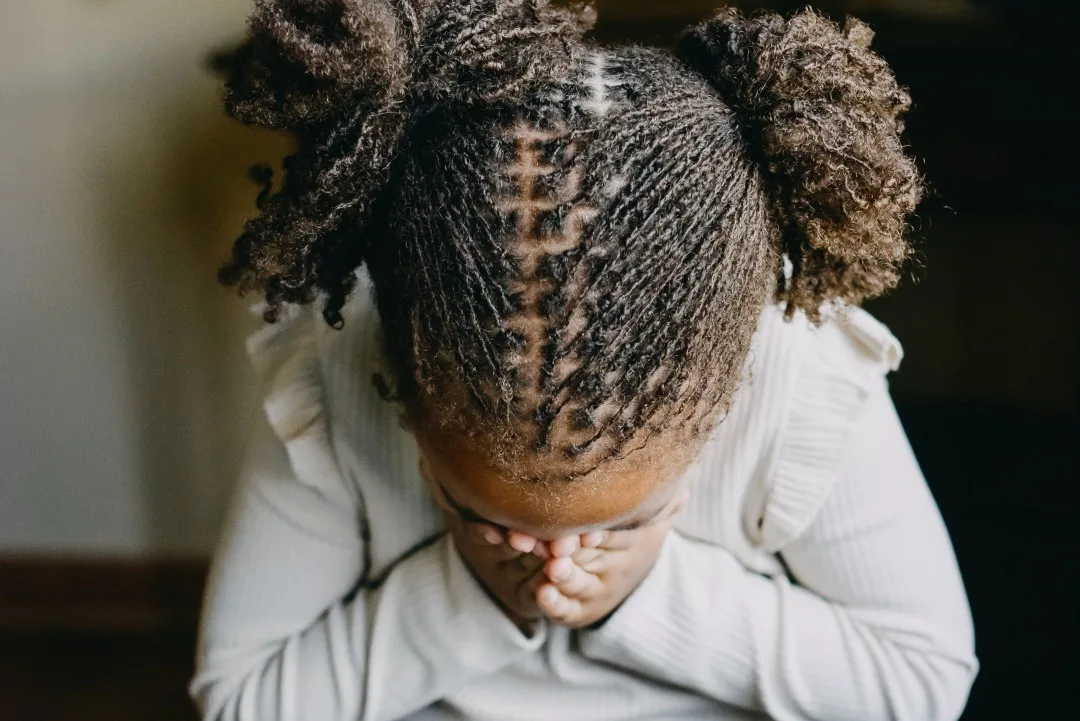
Ignored complaints of students using racist slurs, Black children getting in trouble for reporting instances of discrimination, and white students mockingly reenacting the killing of George Floyd by Minneapolis police officers are all outlined in a lawsuit that hit a Georgia school district earlier this year.
The case is just the tip of the iceberg when it comes to the repeated stress Black youth are exposed to as they’re growing up. Racism, and the chronic stress that it causes, is weathering Black Americans’ health, driving health disparities from anxiety to heart disease and cancer. And, it’s starting at an incredibly young age.
For Black kids, that stress is often caused by racism that comes in school settings: from peers, teachers, or administrators. It’s bleeding into both a mental and physical health crisis, and for Black boys and girls, exactly how that stress looks and affects their bodies can vary by gender.
New research from the University of Michigan shows that although racism might not be the most common type of discrimination, it had the greatest impact on the 100 adolescents ages 13 to 19 that were surveyed. To measure impact, the researchers looked at spikes in a stress hormone, called cortisol. In and of itself, cortisol’s presence in the body isn’t harmful. On any given day, its levels fluctuate from morning to evening. The body’s designed to handle it. But it’s when the normal patterns are disrupted or it remains elevated for extended periods of time — in this case, as a result of discrimination — it erodes people’s health, spiraling into health issues.
“Almost any chronic disease has a link to chronic stress,” said Dr. Rebecca Hasson, an associate professor at the University of Michigan and the study’s lead author.
Read more: Racism’s Relentless Toll on Black Health in America
What Black boys and girls are battling
In Utah, two Black teen sisters are struggling in a predominantly white school district.
“These kids would sit in the back of the bus, looking at me and talking about the N-word and how it must really suck to be Black and a woman,” one shared.
Some students “began asking me if I liked bananas, if I was good at climbing trees,” the other said. They told her she looked like a monkey.
The stress from the racist incidents sometimes shows up in their bodies as anxiety or uncontrollable body twitches, The Salt Lake Tribune reported. They are not alone. Reports of racism in schools have piled up across the country. And the anxiety the sisters carry reflects a broader unease experienced by many Black girls, research shows.
What do they worry about?
They’re concerned about what people of other races think about them, acceptance at school, and their futures. They say they’re afraid of police brutality and stereotypes. Unfairness and sexism.
Of the more than 400 Black girls ages 11 to 18 surveyed in Ohio, over 60% believe they’ve been mistreated because of their race and a similar percentage feel they’ve been treated unfairly because of their gender.
Fran Frazier led that research.
Since then, her work with other young Black girls has identified a handful of different stressors affecting their mental and physical health, from bullying and colorism to body-shaming and difficulty navigating LGBTQ identity. “Many of our girls are always in a fight, flight, or numbing situation,” said Frazier, founder of Black Girl Rising. “Cortisol has a lot to do with that.”
Black kids, on average, experience their first microaggression by age 6, said Steven Kniffley Jr., the senior associate dean for DEI at the University of Cincinnati’s College of Medicine. Kniffley, who studies race-based trauma, says they’ll be exposed to microaggression multiple times a day as they grow up, which can look like exclusion from groups or being made fun of for their physical appearance like skin color or hair texture. An 18-year-old in Texas made national headlines after being suspended because his locs violated the school district’s dress code.
“It’s all leading to us hating ourselves and killing ourselves as part of the process,” he said. Kniffley worries about Black suicide rates. For Black boys, the stress is often around masculinity and messages that teach them to shrink themselves in order to avoid discrimination, like hunching over, talking softly to make others more comfortable, and navigating interactions with police officers.
“How do we disrupt the cycle?”
To fix the crisis, experts are calling on elected officials and school district administrators to create systematic change. But in the meantime, they suggest parents, educators, and community members can support the youth by engaging them in meaningful conversations around what they’re going through, encouraging them to build strong social networks and use exercise as a way to manage stress.
Frazier, in Ohio, hopes adults start to shift the language they use with young folks. “How did school go today?” often prompts one word answers, she said. She has shifted the types of questions she asks:
What did you learn today that is going to help you?
Is there something worrying you?
I noticed that you’re wearing a lot of black or brown, is this becoming your favorite color? What do you like about that color?
Experts also recommend exercise as a way to release tension in the body, and cultivating support social support networks to buffer against the stress.
In the Michigan study, Black adolescents reported experiencing discrimination more frequently than white teens, and noted feeling more stress as a result of a given incident. Discrimination from peers was more stressful than similar comments from strangers or the stress or unfair treatment from teachers or administrators.
That makes sense, said Hasson, the University of Michigan professor, given that social relationships are among the most important in teenagers’ lives. She noted that social media may amplify the trends. It gives teens 24-hour access to their peers, she said.
Still, “it’s not enough to accept that racism is pervasive,” said Hasson. While there are coping strategies families can use right away, our focus should be on eliminating that toxic stress, she said. Just like we don’t want a child in a house full of poisonous lead, said Hasson, we don’t want kids in stressful environments among their peers.
“How do we disrupt the cycle?”
Capital B is a nonprofit news organization dedicated to uncovering important stories — like this one — about how Black people experience America today. As more and more important information disappears behind paywalls, it’s crucial that we keep our journalism accessible and free for all. But we can’t publish pieces like this without your help. If you support our mission, please consider becoming a member by making a tax-deductible donation. Thank you!


